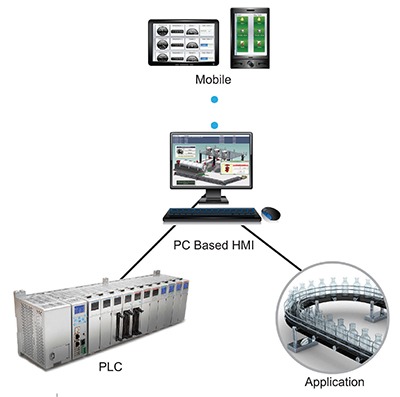To preventing system downtime, regularly test server backups, check on your facilities, monitor your devices, and regularly update devices. These steps will help reduce damage and ensure quick recovery in the event of a server failure.
Additionally, tracking downtime, monitoring production, creating a preventative maintenance schedule, providing operator decision support, and performing DMAIC analysis can further reduce downtime. It’s also important to plan for recovery, keep everything up to date, educate your workforce, install a backup power system, test your infrastructure, and consider disaster recovery as a service.
Constantly monitoring your infrastructure, performing frequent testing, implementing a robust predictive maintenance strategy, having a recovery plan in place, and implementing redundant systems are further measures to reduce unplanned network downtime. By following these strategies, you can minimize system downtime and avoid the associated costs and disruptions.
Understanding System Downtime
System downtime refers to the period of time when a computer system or network is unavailable or not functioning properly. It can have a significant impact on businesses, leading to loss of productivity, revenue, and customer satisfaction.
Common causes of system downtime include hardware or software failure, power outages, network issues, and cyber attacks. These disruptions can result in system crashes, data loss, and extended periods of unavailability.
For businesses, the impact of system downtime can be severe. It can lead to missed opportunities, loss of customers, and damage to reputation. It is therefore crucial for businesses to take preventive measures to minimize system downtime.

Credit: moxa.com
To prevent system downtime, organizations should regularly test server backups, monitor infrastructure facilities, and regularly update devices. It is also important to track downtime, monitor production, and create a preventative maintenance schedule. Implementing redundant systems and having a recovery plan in place can be helpful in reducing unplanned network downtime.
By following these tips and employing strategies to avoid system downtime, businesses can ensure smooth operations, minimize disruptions, and provide better services to their customers.
Strategies For Preventing System Downtime
Implementing redundancy and failover systems is crucial for preventing system downtime. By having backup systems in place, you can ensure that if one system fails, another one can take over seamlessly. This can be achieved through load balancing, clustering, or virtualization.
Regular system maintenance is also essential. By keeping your systems up to date with the latest patches, updates, and security measures, you can minimize the risk of downtime caused by software vulnerabilities or outdated hardware. It is important to schedule regular maintenance windows and perform routine checks to identify and fix any potential issues before they result in downtime.
Investing in reliable equipment is another effective way to prevent downtime. By using high-quality hardware, servers, and network devices, you can minimize the chances of hardware failures that can cause system downtime. It is recommended to choose equipment from reputable vendors and ensure that they have a proven track record of reliability.
Proactive monitoring and alerts are crucial for detecting potential issues before they result in downtime. By implementing monitoring tools and setting up alerts for critical system parameters, you can be notified of any abnormalities or potential problems. This allows you to take action promptly and prevent system downtime.
Creating a disaster recovery plan is essential for minimizing the impact of system downtime. By defining detailed procedures and strategies for recovering from various types of disruptions, such as hardware failures, natural disasters, or cyber attacks, you can reduce downtime and quickly restore normal operations.
Training and educating employees on best practices and proper system usage can also help prevent downtime. By ensuring that employees have the necessary knowledge and skills to use the systems correctly, you can minimize user error-related downtime.
Best Practices For Minimizing Downtime
| Tracking and analyzing downtime |
| Monitoring production and performance |
| Performing preventive maintenance |
| Implementing backup power systems |
| Testing and updating IT infrastructure |
| Considering Disaster Recovery as a Service (DRaaS) |

Credit: blog.hootsuite.com
Regularly test server backups. When a server goes down, you can reduce damage if you get it back online quickly. Check on your facilities as dangers to your infrastructure exist in both the physical and digital worlds. Monitor your devices and regularly update them. Track downtime to better understand the areas that need improvement and implement a system to monitor production and performance. Create a preventive maintenance schedule and provide operator decision support. Perform DMAIC analysis to identify and eliminate root causes of downtime. Plan for recovery by ensuring a fast recovery plan is in place. Keep everything up to date and educate your workforce about downtime prevention. Install a backup power system and regularly test your infrastructure. Consider utilizing Disaster Recovery as a Service (DRaaS) for added protection.
Conclusion
To prevent system downtime, it is essential to follow a few key strategies. Regularly testing server backups and monitoring your facilities can help minimize the damage caused by server outages. It’s also crucial to keep devices updated and create a preventative maintenance schedule.
By planning ahead and considering disaster recovery options, you can ensure a fast recovery and minimize downtime. Constantly monitoring your infrastructure, performing frequent testing, and implementing redundant systems can also reduce the risk of unplanned network downtime. Following these tips will help keep your systems running smoothly and prevent costly downtime.

